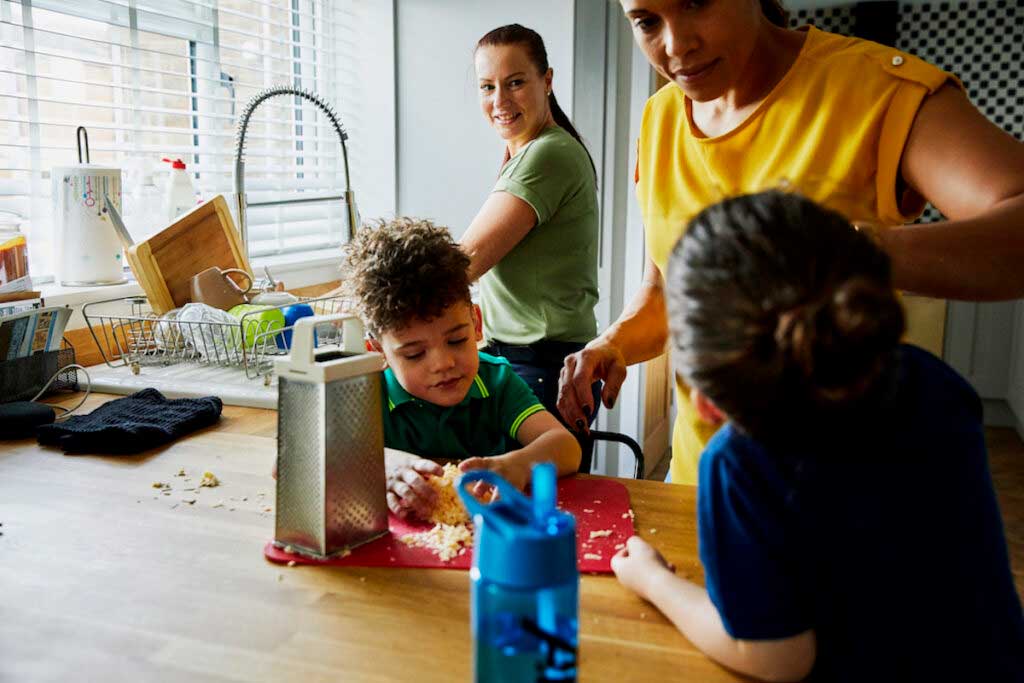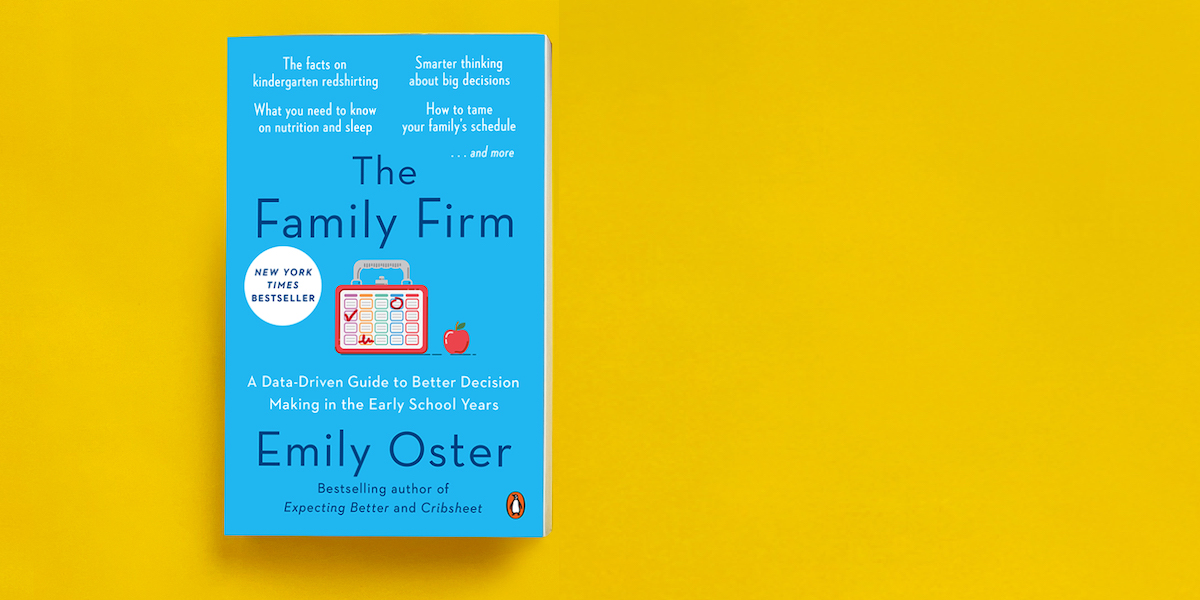A few weeks ago, when The Family Firm came out in paperback, I launched the “One Thing” series — asking you all to identify a single roadblock in your current life, with the idea of using some of the Family Firm toolbox to address it. You really came through with suggestions, and there is much more follow-up coming on these.
I wanted to start today by talking about the topic that came up perhaps the most, which was sleep — in particular, toddler and older-child sleep. As parents, we focus a lot on sleep for infants, but toddler sleep is in some ways less tractable. Sleep training a baby can have emotional challenges, but on a practical basis, it is not hard to implement. Dealing with a 3-year-old who can get out of bed, come into your room, and stand over you in a creepy way until you wake up … that’s a different kettle of fish.
To give you a flavor of what people are dealing with, here are just a few examples:
My 2.5-year-old fights sleep, and specifically bedtime, for hours every night. It makes for lots of stress and tension between my husband and me. If she naps for even 20 minutes during the day, she will be up past 10 at night. On top of this, I have a 6-month-old who also does not allow for much sleep. Our one thing: FIX SLEEP! Make it easy.
Getting our 3- (almost 4-) year-old to stay in his bed at bedtime and fall asleep. It’s relentless. He used to suck his thumb as a baby, and when he gave it up (on his own), he didn’t know how to self-soothe any longer. He’s like a bunny rabbit up and down for hours every night! This is a problem both for him getting enough sleep but also for having any adult evening time to get everything else done. We’ve tried everything, and nothing seems to work for more than a few days. My husband and I have conflict over whether we can lie with him until he falls asleep.
How to keep my 2-year-old in his bedroom at night. We transitioned him from crib to “big boy” bed, and he is up 4-5 times a night, in our room, and it takes forever to get him to calm down and go to bed. I’m exhausted and feel like I have a newborn again! He was such a good sleeper in a crib. How do I keep him in his bed in a way that is loving but firm, so he knows our family’s boundaries around bedtime and nighttime. Many people have suggested locking him in … research seems mixed on this. Help!
My 3-year-old has been struggling to fall asleep on his own for over a year. He gets out of bed instantly and keeps doing it over and over. We have tried so many strategies and feel totally defeated.
My child used to be a great sleeper. After vacation, he wakes up multiple times a night and comes to our room. He cries for us. We have been giving him melatonin, got him a red light/green light clock … still a huge struggle. Feel like a newborn-parent again. I just want us all to sleep!
This is just a small sample. And while all of the entries were a bit different, there are strong similarities. One of those similarities is that (in my view) progress can (likely! I’m not promising!) be made by thinking things through systematically. Today I’m going to walk through that systematic thinking — inspired by the Four F’s of The Family Firm. At the end, I’ll link to a worksheet the team created, which will hopefully help in implementing. And we’ll have a call to action: try it out and tell us the results!
Okay, here goes:
Step 1: “Frame the Question”
In The Family Firm, I talk about the idea of framing the question when we have a big decision — being specific about multiple concrete options. In this case, the language is a little different, but there is still an important need to be concrete.
In many people’s questions, including some of those above, the frame of the request is something like “fix this” or “more sleep” or “make it better.” Those are goals, but they aren’t concrete.
So your first step here: Write down what you are trying to accomplish. Not just in general, but very specifically. Once you have fixed this problem, what will bedtime and overnight sleep look like? I’d encourage you to be specific about timing here: What time to go to sleep and what time to wake up? Can the child play in their room either at bedtime or before wake-up (and if so, for how long)? Is there any co-sleeping? Explicitly map out where you want to be at the end of this process.
The more specific this can be, in a sense, the better, because specificity is going to help deliver consistency, which (see below) is the main advice you’ll get from the data.
Step 2: “Fact Find”
What do we know from the data about how to improve children’s sleep?
There are three things the data points to. First, a consistent bedtime routine. We have evidence like, for example, this randomized controlled trial that showed that introducing a consistent three-step bedtime routine (bath, lotion massage, cuddling or singing) improved infant and toddler sleep over a three-week period. It also improved maternal mood. A related study showed that a consistent bedtime routine can improve sleep within three nights.
Second: There is a lot of evidence on the value of consistency in general in encouraging behavior change in kids. We see this in discipline programs, we see it in the bedtime routine, and we see it in other aspects of sleep. Richard Ferber, in his book Solve Your Child’s Sleep Problems (which I think is quite helpful, if often confusingly written), spends significant time on the value of consistency not only in the bedtime routine but also in the way you respond to problematic sleep behaviors.
Finally, no screens. I talk more about this in Family Firm, but there is experimental (in individual children) evidence that shows that when kids watch television or play video games within a couple of hours of bedtime, it interferes with their “sleep architecture” (translation: they sleep worse).
I wish there were a better magic bullet here in the data. What we take out of this is that your approach to fixing the problem should involve (a) a bedtime routine, (b) consistency, and (c) limited screens before bedtime. The somewhat good news in the data is that behavior changes can be fairly fast. Which doesn’t necessarily mean this is easy to implement.
Step 3: “Final Decision”
At this step in the process, when talking through a big decision, I encourage people to get all the information together and sit down to make a final, informed decision.
Bedtime isn’t quite a decision like this, but the parallel is clear. Knowing where you want to go, and something about the elements that might help you get there, sit down and make a concrete plan.
This plan should be very concrete. It should include details about the bedtime routine. It should include details about what happens if the child comes out of their room. The Ferber book is especially helpful on this, I think, but the key point is back to consistency. Whatever you do, do it every time. If it is silently taking your child back to their room and closing the door, you do that every time. If coming out of the room is an issue, this is a time to talk about your feelings on gates.
One reason to write this all down, to talk through the details, is that it is very easy to feel like one is being consistent when one is not. Forcing yourself to be explicit about what your plan is can make this more feasible. One of the notes above says, “We’ve tried everything.” Don’t try everything! Try one thing, but for a longer period of time.
A second reason to write it down, and to discuss it explicitly, is to try to get on the same page. A number of the quotes above — and others — highlight the issue of partner disagreement. It will be extremely difficult to implement a consistent policy here if you do not agree on it. I’m not suggesting it is simple to come to agreement. But if you can’t, I’m not sure this is a solvable problem, and that is good to know. I also suspect your best opportunity for coming to this agreement is to sit together with all the information and try to, dare I say, compromise.
Once you have this plan in place, choose a time to implement it. Bad news: the first few nights of it may be horrible. You should expect this, so pick a time when you feel ready. Good news: the research suggests things can improve quickly.
There are two other important pieces of this plan. One is metrics of success. How will you know how things are going? Good options would be things like: actual bedtime or number of times the child comes out of their room. As you identify the behaviors you are trying to change, it should be possible to quantify them.
The second piece is planning an explicit time to revisit how things are going. As in: we’ll implement this plan as we have written it for two weeks [three weeks, a month] and then we will sit down to evaluate (ideally, armed with the metrics we’ve collected).
Step 4: “Follow-Up”
We rarely do serious follow-up on our decisions. I think it’s because we do not like to be wrong (I wrote more about that here). A planned follow-up can help us get over this hump. You weren’t wrong! It was just an experiment!
In this case, plan a time to follow up when you can take stock of how the new bedtime is going. Is it better? Worse? The same?
If things are better, great! If they are worse or similar, this is at least an opportunity to revisit what the continued roadblocks are and think about new solutions.
Game to try it? Here’s a worksheet! Also, send feedback
To make some of this just a touch easier, we’ve created a worksheet, which you can find here.
If you try this approach (with or without the worksheet), we’d love to hear about it and get your feedback. You can email us here — send your completed worksheet, and let us know what the problem was and whether this helped.

















